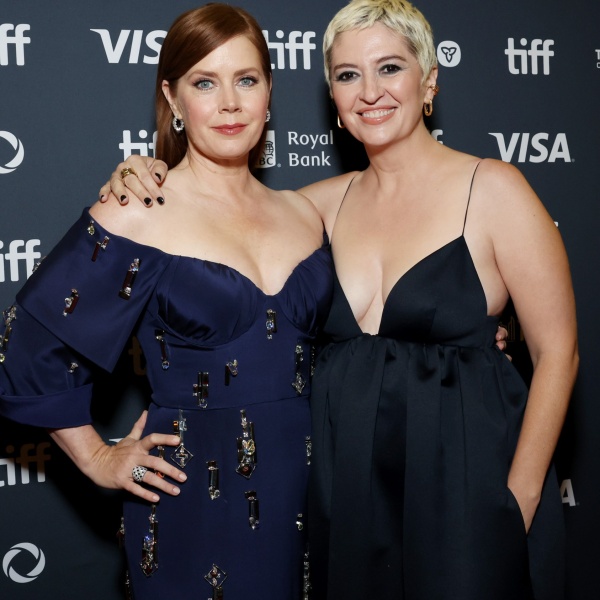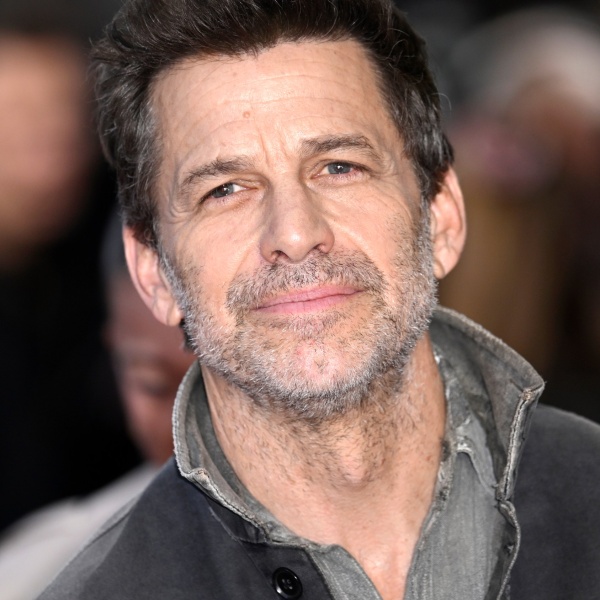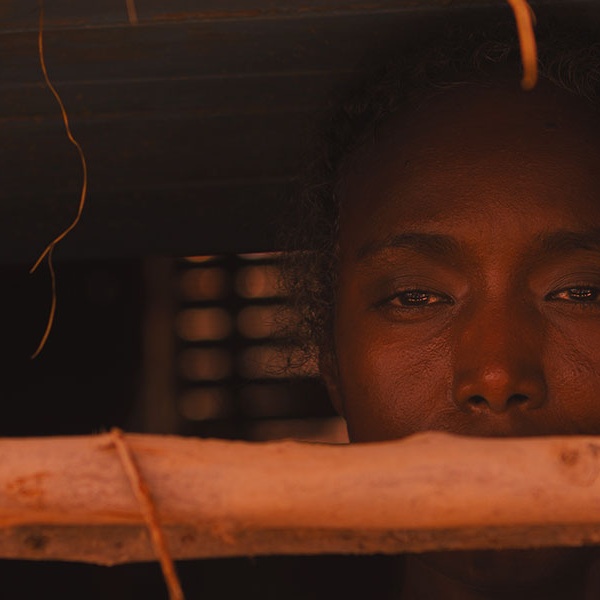In the nine years it took to make “The Zone of Interest,” director Jonathan Glazer singles out his visit to the real-life home of Rudolf Höss (Christian Friedel), the commandant of Auschwitz, as the breakthrough moment the film started to come together.
“It was a very physical experience for me,” said Glazer of standing at the wall separating the Höss’ yard and the concentration camp. The intensity of the feeling would only grow and guide the film’s development. While on the Toolkit podcast, Glazer explained how in recent years his wife Rachel Penfold has helped him start to understand his creative process. “She said it’s like I’m chasing that feeling, to put that physical feeling on screen, and the images and the film is the sort of scaffolding that supports that feeling.”
For a filmmaker whose process rivals Kubrick’s in the years of methodical planning, we think of Glazer’s precise formal choices as being more intellectual than instinctive. Yet Glazer admitted it wasn’t until he was editing the film, while reading philosopher Gillian Rose, that he was able to fully articulate what he was trying to do with “The Zone of Interest.”
“[Rose] imagined a film that could make us feel ‘unsafe’, by showing how we’re emotionally and politically closer to the perpetrator culture than we’d like to think,” Glazer said. “It articulated something for me in a way that I hadn’t been able to for myself.”
By forcing his audience to observe how frighteningly ordinary the Höss’ domestic life was, the viewers can’t help but see themselves in those who carried out such atrocities. Rose’s description of a film seen through the “dry eyes of grief,” drawing unsentimental tears through a “forensic” observation, encapsulated how Glazer shot “Zone.” Glazer would deny himself the normal filmmaking tools that allow directors to gain access to character interiority and experience the story through their psychology, opting instead for 10 surveillance-like cameras, with no film crew or gear present on set.
Often when filmmakers talk about these types of formal choices, they are framed by how they want the audience to experience the film. But for Glazer, it was about “the critical distance between myself and the actors portraying these people,” adding “I wanted it for me to feel like I was recording reality television.” The POV he would eventually give his audience would be the one he needed for himself while making it. “I wanted to take away all of those decisions and distractions, and simply [watch] these scenes play out in real-time, and by so implicating, or, immersing myself initially as the viewer into the same space as [the characters],” said Glazer.
According to cinematographer Łukasz Żal, the camera system he devised for Glazer to simulate recording live events, “was just simple, honest, and functional.” The cinematographer selected the Sony Venice with the Rialto extension because it’s the smallest available camera, and they could shoot continuously and be hidden in furniture or walls. But getting to the point where the system ran like clockwork was far from simple, and required a great deal of ingenuity to become functional. Allowing the large cast, consisting of both professional and non-professional actors, to roam around the house in different rooms and play out their scenes without interruption required a combination of tech innovation, rigorous planning, and a radically unorthodox mindset that welcomed chaos in pre-production.

“The process was completely different than the traditional way,” Żal said. “For me, more important than shooting were prep days. Because in the prep days, we’re making the decisions.”
Żal prepared detailed documents and floor plans of all the camera setups for his crew, but the coordination of the 10 cameras didn’t work in the beginning. It was a process of constant refinement, with each new trial-and-error step ending in Żal retreating to the container, built behind the wall of the house and equipped with 10 monitors, to analyze with Glazer.
“The actors were there for hours doing their things, living there, speaking, and we were outside, just witnessing this completely, and I was losing total control,” Żal said. “I could look at focus and everything is OK in terms of technology, but then there are the performances, so we need to anticipate where they will go and where to put the cameras because we didn’t know. For example, if the boys use a bow and arrow, then we wanted a wide shot. But what if they sit over here instead and play with a stick?”
The work involved with creating a system that accounted for filmmakers’ inability to make adjustments during production was impressive, more so when you consider the cinematic results. Released against the backdrop of an awards season in which adorned period filmmaking puts an inviting frame around historical events and settings, Glazer knew his entire project would crumble if it contained any visual cues signaling the audience was watching a movie.

“The axiom of the whole project was ‘make it present,’” said Glazer. “We are looking at the perpetrator square in the eye. We can’t dismiss it as a film. We can’t say, ‘I’m safely watching a film.’”
And yet the 42-year-old Żal, already a two-time Oscar nominee for “Ida” and “Cold War”, very well could get his third for “Zone,” in large part because the imagery he and Glazer created transcended their anthropological approach.
Utilizing the Leitz M 0.8 lenses Żal created a modern, sharp look, that was cinematic but careful not to aestheticize. He found a balance in images that were well composed, without interpreting action. The lighting (dependent on the sun and practicals) evokes a strong sense of place while remaining 100 percent natural. And the color representation is devoid of the saturation common in modern movies, but nonetheless striking.







